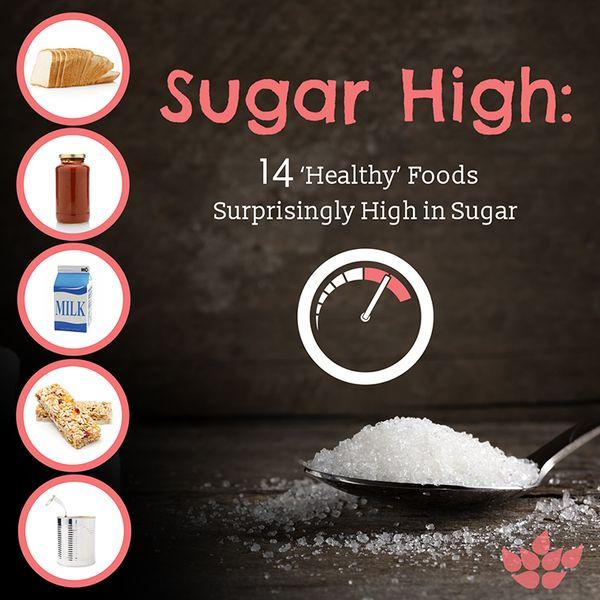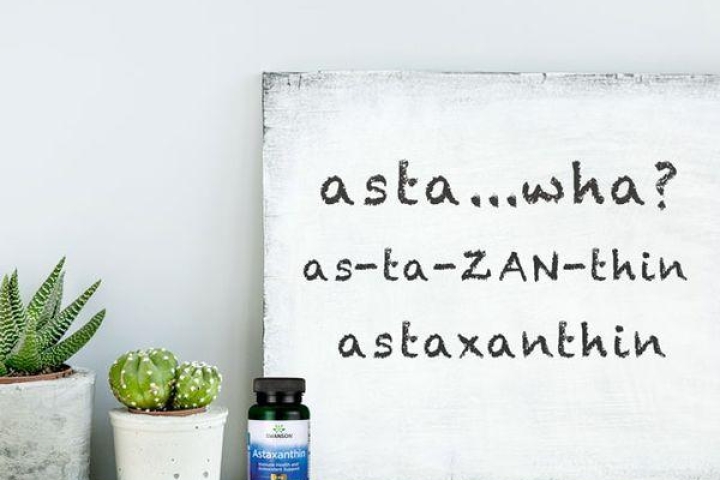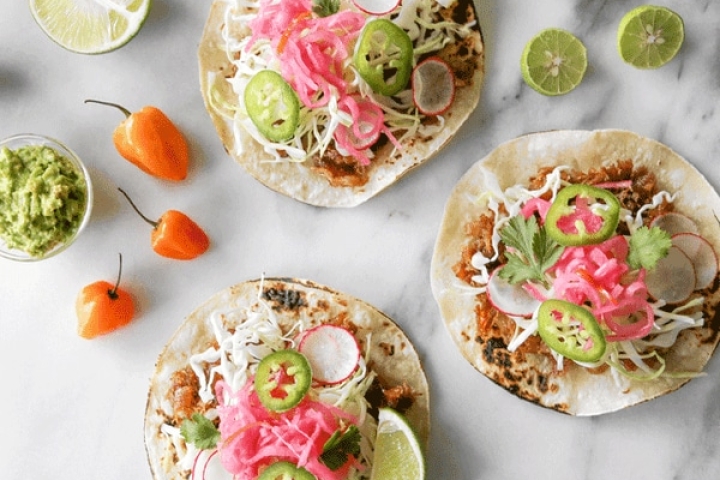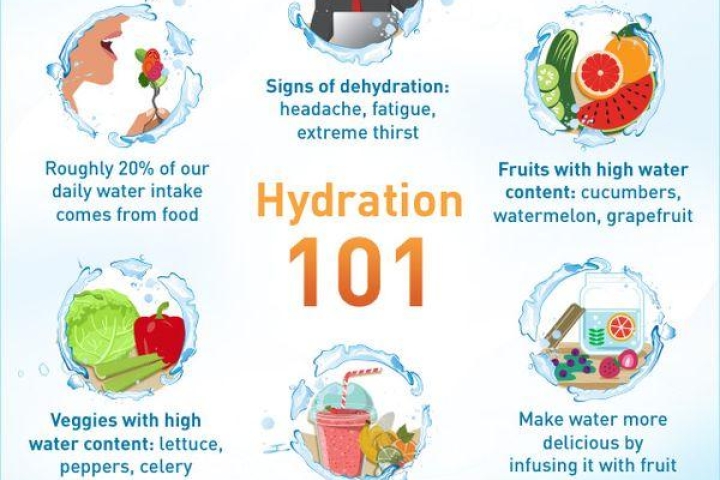Sugar High: 14 ‘Healthy’ Foods Surprisingly High in Sugar
For years, we were told that reducing fat intake was the key to losing weight and staying healthy. An entire generation grew up hearing about the evils of fat and cholesterol and how these two substances were the root cause of all our ailments. But food science has advanced, and there’s a new dietary villain atop the most dangerous list... one that deserves the title.
Sugar.
Sugar is the new arch enemy, having been linked to an increased risk of several health concerns. However, the problem isn’t just that too much sugar is bad for us; it’s that added sugars are pervasive in our standard American diet, even in supposedly healthy foods.
A Day of "Healthy Eating" Can Contain Over 100 Grams of Sugar
Here is our example menu:
- Breakfast: Cereal with milk + glass of juice
- Snack: Yogurt
- Lunch: Chicken with BBQ sauce + salad with fat-free salad dressing
- Snack: Protein bar
- Dinner: Spaghetti + salad with fat-free salad dressing
Grand Total: 140 Grams of Sugar
How Much Sugar Should You Eat? "For an adult of a normal body mass index (BMI), that works out to about 6 teaspoons -- or 25 grams -- of sugar per day." - CBSnews
Our day of "healthy eating" had nearly 5x the recommended sugar intake. It really adds up fast. Below, you can see the breakdown of some surprisingly high sugar foods.
The following list is proof that you must be diligent about checking the nutrition facts no matter what the food’s popular reputation may be.
1Muffins (up to 15 grams of sugar)
Whether you make them from a box or buy them off the bakery rack at the grocery store, muffins are often loaded with as many as 15 grams of sugar per serving. They seem like a quick, healthy breakfast or snack—especially the ones with fruit—but more often than not, they’re formulated for your sweet tooth, not your waistline.
2Breakfast Bars/Granola Bars (up to 9 grams of sugar)
What masquerades as a healthy breakfast item is really a front for added sugar and high fructose corn syrup. Granola bars can have up to 9 grams of sugar per bar, along with other unhealthy ingredients like enriched white flour. Opt for whole fruit and nuts, and skip the bars.
3Protein Bars (up to 20 grams of sugar)
Most popular protein bars are no better for you—sugar-wise—than those breakfast bars. They boost your protein intake, but to make them palatable, expect up to 20 or more grams of added sugar. Consider mixing up a protein shake instead.
4Cereal (over 10 grams of sugar)
Many of us grew up eating cereal for breakfast. Cereal manufacturers captivate kids with fun characters and bright colors on the box, paying little attention to nutrition. Parents, on the other hand, must be vigilant. Sugary cereals are practically just sugar.
5Store-Bought Spaghetti Sauce (up to 12 grams of sugar)
Opt for preparing supper staples from scratch rather than buying store-bought versions like spaghetti sauce. Look for “no sugar added” or “no high fructose corn syrup” on the label to avoid upwards of 12 grams of added sugar per serving in your Italian meal.
6Salad Dressing (up to 10 grams of sugar)
The quickest way to turn an otherwise healthy salad of mixed greens and veggies into a sugar-laden meal is by adding salad dressing, particularly in large amounts. Even “light” or "fat-free" varieties tend to compensate for the lack of fat with increased sugar content. Consider making your own dressing using balsamic vinegar, organic olive oil, and a pinch of organic Italian seasoning.
7Condiments (over 10 grams of sugar)
I love ketchup, but realizing that a quarter of the bottle is just sugar makes it easier to resist. It’s not just ketchup; BBQ sauce, mayonnaise, and ranch dips are all high in sugar. Regular yellow mustard, however, remains a guilt-free option in your fridge—it contains zero fat and virtually no sugar, salt, or calories.
8Fruit Juice & Flavored Teas (up to 36 grams of sugar)
Fruit juice might sound healthy and does provide valuable antioxidants, but its sweet flavor comes from sugar. When you extract juice from fruit, you lose all the beneficial fiber. Similarly, tea is great until sugar is added for flavor.
9Energy Drinks (up to 54 grams of sugar)
I’ve never been a big fan of energy drinks, preferring a boost from freshly brewed black coffee or green tea. Although these drinks rely heavily on caffeine, they also contain substantial amounts of sugar, which is often overlooked in commercials.
10Milk (up to 12 grams of sugar)
The old myth that Americans need to drink gallons of milk to prevent weak, brittle bones has been debunked. Despite heavy marketing, today’s processed milk is a significant source of hidden sugar, containing up to 12 grams per serving. If you maintain a healthy diet with fresh veggies, you’re getting all the calcium your body needs without needing another animal’s milk.
11Bread (up to 3 grams of sugar per slice)
I love bread and find it hard to make decisions about it, considering it’s a staple in my diet. Store-bought bread, although cheap and convenient, is not only loaded with added sugar but also contains unhealthy preservatives. Fresh bread from a bakery or homemade, however, contains just a pinch of sugar per loaf. Did you know there was such a difference?
12Yogurt (up to 20 grams of sugar)
Returning to breakfast items, if you love yogurt, stick with plain Greek yogurt and skip the flavored varieties. Plain Greek yogurt is an excellent source of protein and calcium, but fruit-flavored options can contain up to 20 extra grams of unnecessary sugar.
13Canned Soup (up to 15 grams of sugar)
I only eat canned soup when I’m fighting a strong head cold. It’s easy, goes down well, and tastes good. Since it’s a rare indulgence, I can manage the extra 15 grams of added sugar each serving contains. Otherwise, it's best to leave canned soup on the supermarket shelf.
14Anything Labeled “Fat-Free” (sometimes 2x the sugar of the regular version)
It’s simple: flavor has to come from somewhere, and in America, we crave it. If something is labeled “fat-free” or “light,” the taste often comes from added sugar, not fat.
Your Key Takeaway: Always read the nutrition labels on everything you buy. Added sugars can accumulate quickly!





Leave a comment